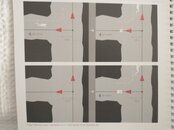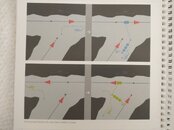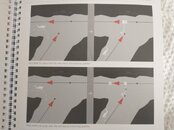So I finally got to read the book after having it delivered to the UK. It still cost $50 all together with shipping which was excessive, but it is a quality book.
It is definitely written from a Mexico cave perspective but I believe most of what it says applies to us in Florida as well. As previous posters said it doesn't give any new way of doing things, rather it puts in pictures what the common existing protocols say in words. The book is mostly diagrams of different line layouts and how to use markers to navigate them. I was hoping it might go into some more complex line layouts but what it has is solid. Where there are a few different approaches, such as team vs individual markers, and securing jump lines to markers vs directly to the line, it gives multiple illustrations showing the different options.
The book is firmly against using personal arrows as markers for jumps. Instead it promotes using cookies or REMs to avoid changing the existing navigation layout of the cave. It doesn't suggest a preference between cookies and REMs, it just explains how they are used differently.
It also advised against tying into permanent arrows for jumps, and this is one of the topics where it differs from some common Florida cave diving practices.
The beginning of the book is geared towards exploration, explaining line use and relevant knots.
In summary, I think this would be a great companion book to a standard cave textbook as it is more in depth on line and marker use, and has more examples than any other book I have seen. I think it would be especially useful to instructors as the diagrams would be a great dryland training aid.
Hopefully it can become more commonly available over here and avoid the excess shipping charges.







